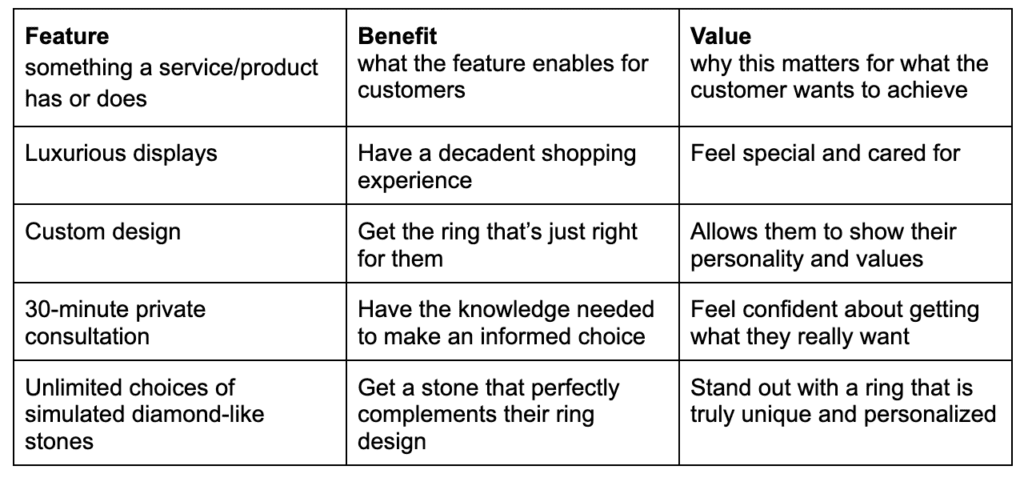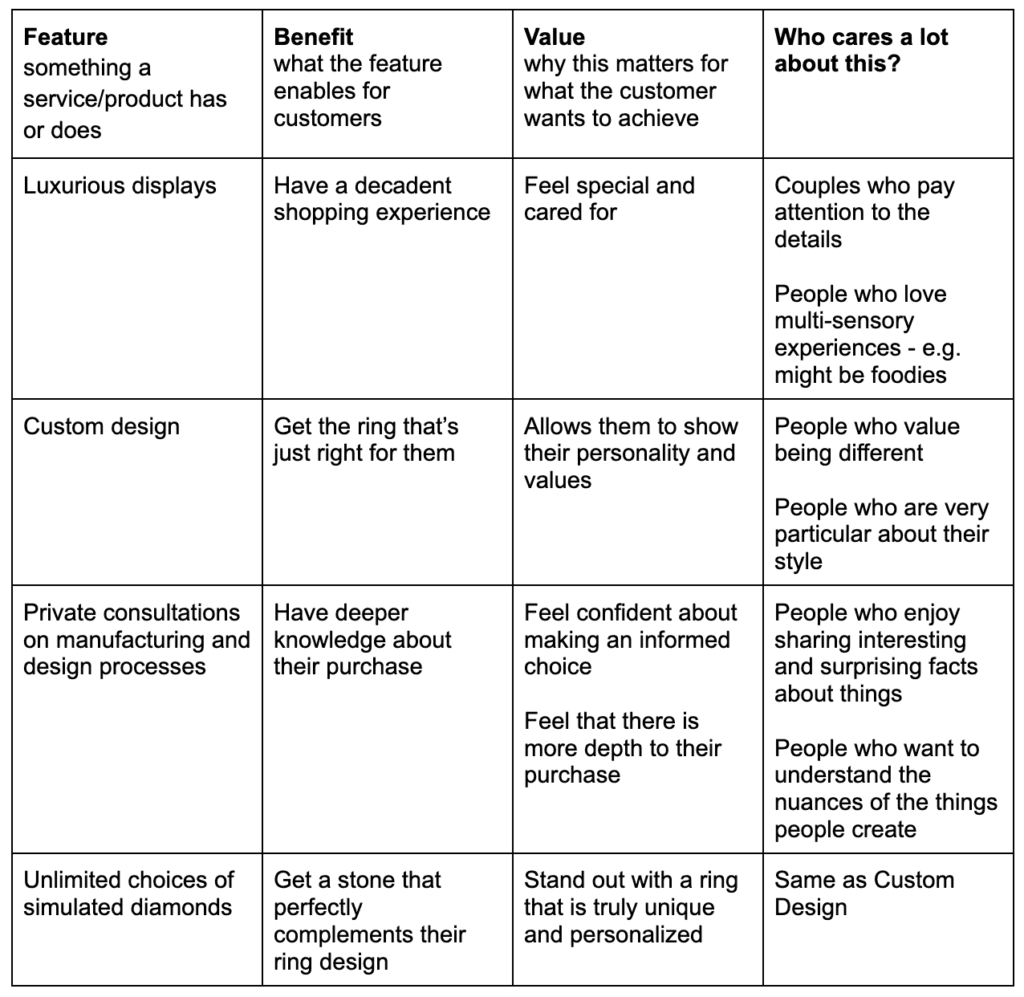When my now ex-husband and I got engaged, we didn’t agree on the engagement ring.
It’s not that he wanted to weigh in on the style of the ring but that he insisted it be a real diamond ring.
I didn’t think it made sense to spend so much money on something that didn’t matter to me. I would have been happier to save thousands of dollars with a man-made simulated diamond.
What I cared about most was having a beautiful ring that symbolized my connection to someone I loved. A genuine diamond did not add to what I valued about the experience of wearing this ring.
Underserved Market With Unmet Needs
If a store had existed that catered to people like me, I could have convinced my fiance to go that route. Especially if the experience of purchasing the ring was in line with his real diamond purchase expectations.
At the time, those of us who wanted beautiful engagement rings without real diamonds were an underserved market with unmet needs.
The few alternatives to real diamond rings were mostly cheap looking cubic zirconia rings available in department stores or franchise jewelry stores.
No one was providing the full and special ring shopping experience with quality-looking simulated diamonds.
Since then, a number of companies have addressed this gap in the market. But they aren’t all serving the same people in that market.
If they’re smart, they’ve positioned themselves in sub-segments of the market they can own based on the differentiated value they provide.
Here’s how to determine differentiated value
When I work with clients on their positioning, we aim to define their position – or sub-segment in an existing market – where they are the clear choice to help someone achieve a specific goal or transformation.
As part of the process*, we outline all the features of their service and approach so we can uncover the differentiated value of those features.
This goes beyond benefits but defining the benefits can help us get to the value.
We go from Feature → to Benefit → to Value.
A feature is something a service/product has or does.
A benefit is what the feature helps a customer do.
Value is how the feature and its benefits matter for what the customer is trying to achieve (e.g. the transformation, the goal).
Here’s a simplified breakdown of what this might look like for a fictional store selling engagement rings with simulated diamonds.

Now we need to figure out who cares a lot about the value.

The people who care a lot about the particular mix of value you provide can be defined by their role, present situation, budget, platform, specialty, industry, resources, knowledge etc.
Once you know who cares most about the value you provide, you can more precisely situate your particular special sauce among others offering similar services to you.
This helps people who care understand what you can do for them.
It helps them make a decision about how they can solve their problem and/or achieve what they want to achieve.
When you do the work of clearly positioning your services, you are setting the foundation for helping people choose you.
